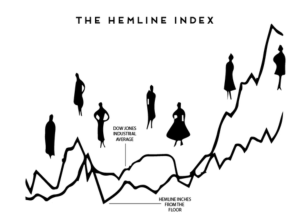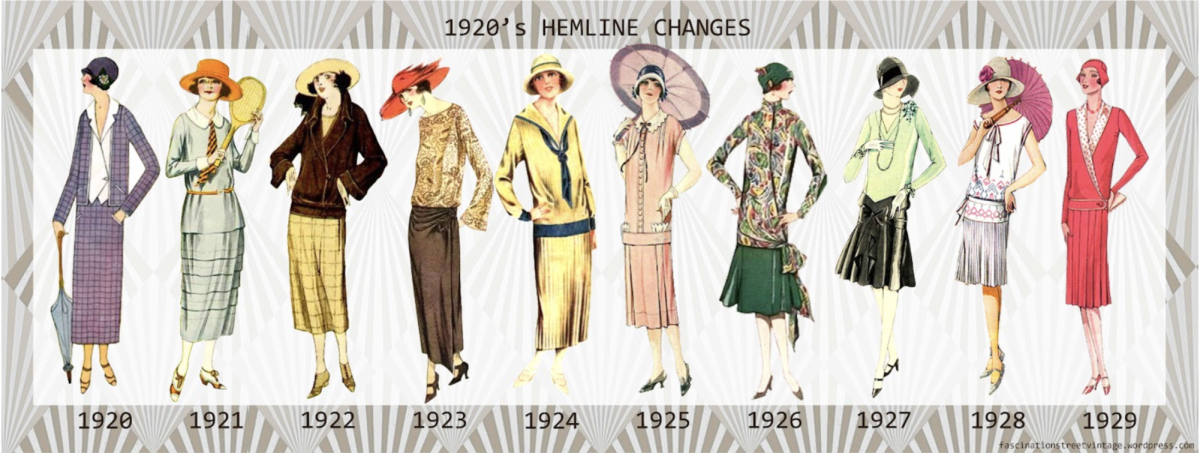The Hemline Index: Fashion as an Economic Indicator
The idea that hemlines correspond with economic health isn’t new. In 1926, economist George Taylor proposed the Hemline Index, a theory suggesting that skirt lengths rise in times of economic prosperity and fall during downturns. The logic? When the economy is booming, shorter skirts are popular as people feel more confident and flaunt luxury. In contrast, longer skirts dominate during recessions, symbolizing modesty and caution.

The 2025 Maxi Skirt Boom
Maxi skirts are everywhere this season—on runways, in streetwear, and in the wardrobes of influencers and celebrities. Luxury brands like Chanel and Prada are embracing flowing, full-length silhouettes, while fast-fashion retailers are selling out of affordable versions. The trend aligns with a larger shift toward practicality, comfort, and longevity in fashion—key indicators of financial uncertainty.
The 2025 Maxi Skirt Boom
Maxi skirts are everywhere this season—on runways, in streetwear, and in the wardrobes of influencers and celebrities. Luxury brands like Chanel and Prada are embracing flowing, full-length silhouettes, while fast-fashion retailers are selling out of affordable versions. The trend aligns with a larger shift toward practicality, comfort, and longevity in fashion—key indicators of financial uncertainty.

Why Are Maxi Skirts Trending?
Several factors contribute to their popularity:
- Economic Uncertainty – Global inflation concerns, layoffs in tech and finance, and whispers of an upcoming recession have consumers leaning toward practical, versatile fashion.
- Sustainability Movement – Maxi skirts fit into the sustainable fashion trend, as they can be styled year-round, making them a long-term investment piece.
- Nostalgia for the 2010s – Fashion cycles tend to repeat every 10-15 years. The current love for Y2K and 2010s aesthetics brings back the bohemian and grunge-inspired maxi skirts from that era.
- Cultural Shifts – The rise of quiet luxury and modest fashion has pushed consumers away from ultra-revealing styles toward more elegant, covered-up looks.
So.. Are We Headed for a Recession?
While maxi skirts alone aren’t enough to predict a recession, they do fit into a broader picture of economic caution. The Federal Reserve’s ongoing battle with inflation, uncertainty in global markets, and changing consumer spending habits all suggest a potential slowdown. However, the economy remains complex, influenced by factors beyond just fashion trends.
Whether maxi skirts are a true recession signal or just a cyclical fashion trend, one thing is certain—they’re here to stay, at least for now. So, while we watch the economy unfold, we might as well embrace the style.
Sources:
“1920’s Skirts.” Author Website, 5 June 2015, fascinationstreetvintage.wordpress.com/2015/06/05/1920s-skirts/.
Cary, Alice. “The 7 Skirt Trends to Look out for in 2025.” British Vogue, British Vogue, 16 Jan. 2025, www.vogue.co.uk/article/2025-skirt-trends.
Castanheira, Chloé. “This ’70s Skirt Trend Is Back in a Big Way This Summer.” Glamour, Glamour, 5 July 2023, www.glamour.com/story/the-70s-maxi-skirt-trend-summer-2023.
Ritholtz, Barry. “The Hemline Index.” The Big Picture, 13 Sept. 2010, ritholtz.com/2010/09/the-hemline-index/.
Tortora, Laura. “This Is the Maxi Skirt Trend You’ll Be Wearing in 2025.” British Vogue, British Vogue, 27 Sept. 2024, www.vogue.co.uk/article/column-skirt-trend-ss25.
Waligora, Mallory. “When Fashion Meets Finance: The Hemline Index.” The Oakland Post, oaklandpostonline.com/47204/politics/when-fashion-meets-finance-the-hemline-index/?utm_source=perplexity. Accessed 26 Mar. 2025.
’23, Lauren Yee. “Hemlines, Fashion Trends, and the Economy.” The Willistonian, Est. 1881, www.willistonian.org/hemlines-fashion-and-the-economy/?utm_source=perplexity. Accessed 26 Mar. 2025.





